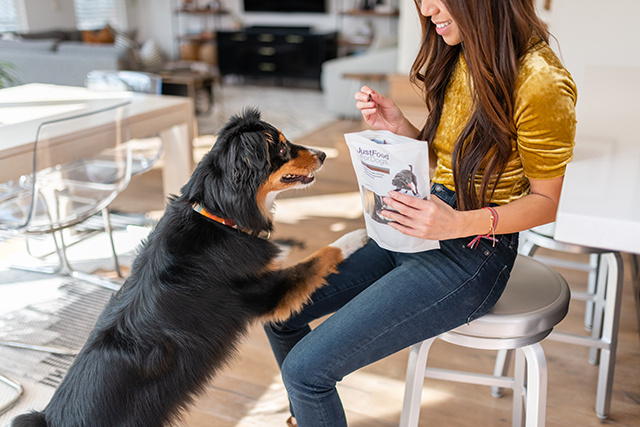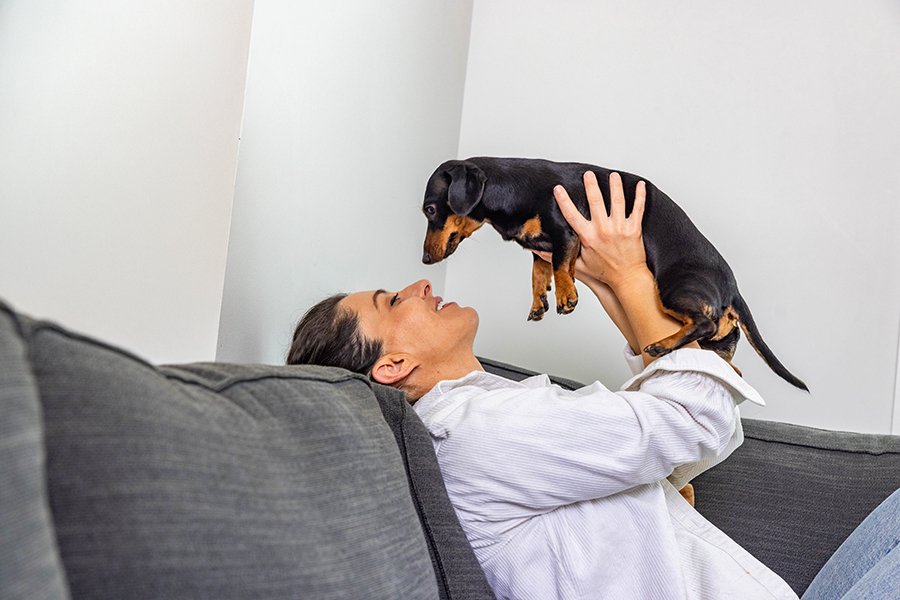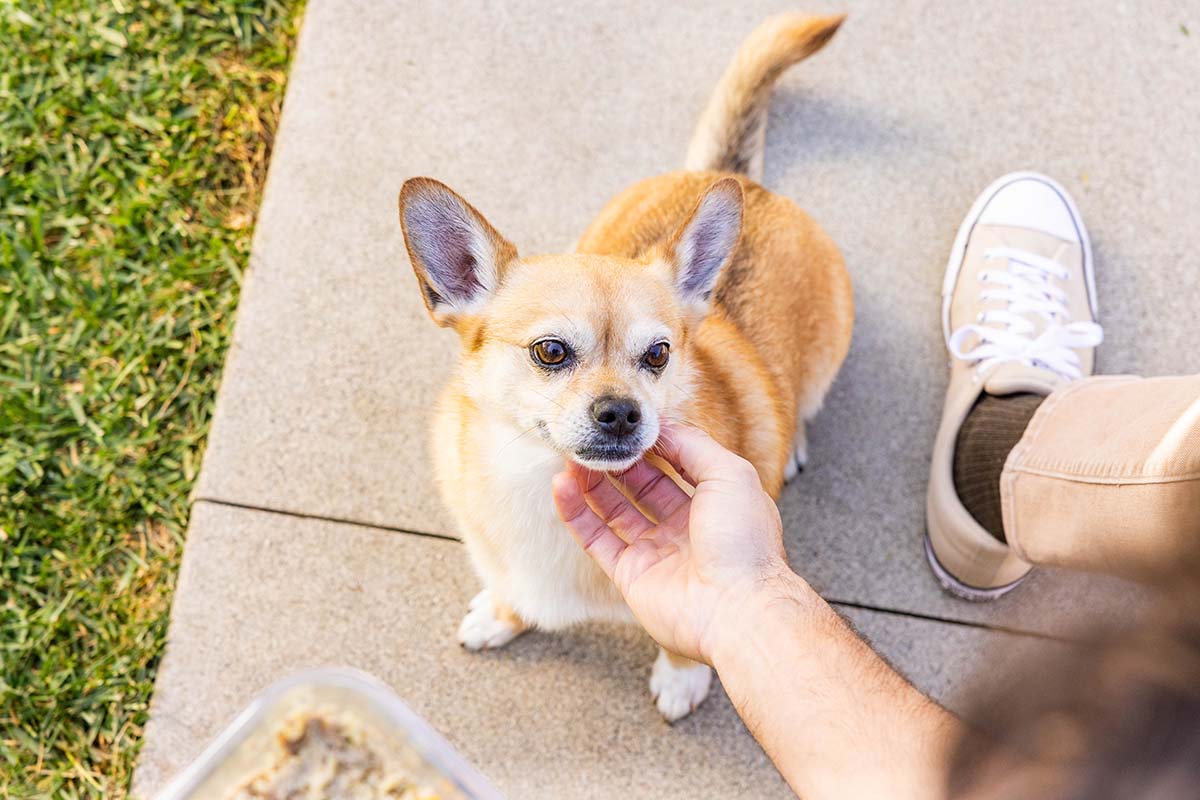Dog Won’t Eat His Food, But Will Eat Treats? Here’s Why.
It is not an uncommon problem if your dog won't eat his food but will eat treats. In fact, this kind of eating has a name. It is called partial anorexia.
It is not an uncommon problem if your dog won’t eat his food but will eat treats. In fact, this kind of eating has a name. It is called partial anorexia. Full anorexia is when your dog won’t eat anything.
Partial anorexia is when your furry friend will eat but only special food that has either been ‘doctored’ by adding table scraps or special treats. He doesn’t, however, eat his regular dog food, whether that’s kibble or canned food.
This usually isn’t due to him just being a picky eater; rather, it’s usually due to medical conditions of some kind. Of course, when this happens, loving pet parents experience extreme anxiety because they want their beloved pooch to start eating like he should.
So what exactly causes partial anorexia? Let’s take a look at the common reasons your best friend is turning his nose up at his regular food.
Why Doesn’t Your Dog Eat His Regular Food?
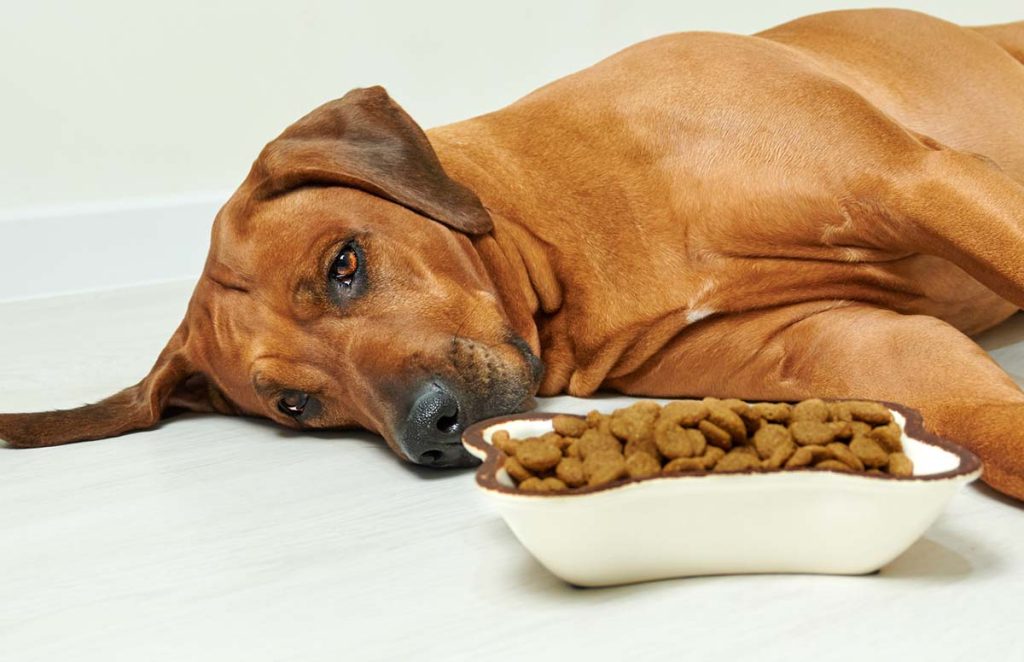
There are a variety of reasons that your pooch may only eat dog treats as opposed to dog food. Even if you give him wet food, he may still prefer just the treats. Why is that? Let’s take a look at several possibilities.
6 Psychological Reasons for Partial or Full Anorexia
A healthy dog will eat his normal food at mealtime. But the reason your pooch may not be eating might not be a physical problem. It could be something psychological. In this case, he may be going on a hunger strike because something has upset his normal environment or routine. Here are several possibilities:
1. Separation anxiety
Separation anxiety, fear, and stress in general can negatively affect a dog’s appetite as well. Just like with humans, a dog’s appetite can be put off by stress, and few things are as stressful for your pooch as when you disappear. It might not even be you who disappears. It could be your child who goes off to college. To your dog, it’s like a member of the pack has been lost. That can definitely put him off his feed if for no other reason than it gives him an upset stomach.
2. Guests are visiting
If the cause behind your dog’s changes in eating habits isn’t because someone has left the house, it might be because someone has come to the house. When a dog’s environment is changed by people coming or going, it causes stress, and once again, that can put him off his feed.
3. A new pet in the house
Another big reason why a dog might stop eating except for treats is if there is a new pet in the house. This is particularly true if your dog is a senior dog. In a multi-dog household, intimidation, food stealing, or bullying at mealtimes can cause a dog to stop eating. A new pet in the house is cause for a restructuring of the pack, and that can be a very stressful situation.
The same thing can happen if there’s a new baby in the house. Your pooch is used to his pet parents doting on him, and maybe only him, but when a new baby or another pet arrives in the house, the established relationship dynamics are disrupted. That causes stress and can result in partial or full anorexia.
4. New food
If you have recently switched to a new food, your dog may be indicating his displeasure with your choice. It might just take him a while to get used to it, but it could also be that he preferred the old food, and he’s letting you know.
5. Moving or home renovation
Changes in your dog’s environment, such as moving to a new home or remodeling your current home, are other reasons for a hunger strike. Again, stress is the culprit here, and it may just take some time and extra attention to get your dog back o his normal diet.
6. Stressors like thunderstorms
Another thing that can put your dog off his feed is some kind of stressor. It may be something temporary, like a thunderstorm, or something that lasts longer, like a family member getting a job and leaving the house more or losing a job and being around the house more. Once again, these are stressors that can affect your dog’s eating habits.
There may be other psychological reasons behind your dog’s refusal to heat his pet food, and depending on the source of the stress, there are different solutions that can help. But before we discuss that, let’s take a look at some of the health problems that could cause anorexia.
Medical Issues for Anorexia in Dogs
There are several medical conditions that can cause partial or full anorexia in dogs. Think of the digestive system as a being made up of interconnected parts. When something goes wrong in one area, it affects the other areas as well. Let’s start at the top.
Dental Issues
Dental disease is a common reason why a dog would refuse to eat. Pain with chewing, particularly if you normally feed your dog hard dry dog food, dry kibble, or tough chews, can cause dental problems. It’s easy to think of dental issues as not being that big of a deal, but in fact, it’s a very big deal.
Dental disease can spread bacteria to other parts of the body, including the heart and kidneys, where it can become a life-threatening condition. That’s why it’s vital to take care of your dog’s teeth.
If you think a dental problem could be behind your dog’s refusal to eat his regular food, you’ll want to get him into his DVM as soon as you can to have the problem addressed. While you’re waiting for his appointment, you can dry feeding him wet dog food so he can stay as healthy as possible until you can get the problem resolved.
Gastrointestinal Disease
The gastrointestinal system, or GI tract, begins in the mouth and includes everything between the mouth and the anus. That includes his esophagus (the tube that food passes through to reach his stomach), his small intestine, and his large intestine, which terminates in the anus.
We’ve already discussed dental issues that could cause anorexia, but a bacterial or viral infection in any part of the GI tract can have the same effect. Infections include parasitic infestations from something like hookworms, roundworms, or whipworms, as well as viral or bacterial infections.
Additionally, other diseases like tumors in the GI tract, ulcers, inflammatory diseases, food allergies, old food that has gone bad, and the ingestion of a foreign body can all cause problems in the GI system that will result in pain and a lack of appetite.
That’s why it’s important to monitor your dog’s diet carefully. Check the expiration dates on the food he eats, just like you would your own food, don’t give him human food, particularly foods like chocolate that can be toxic, and make sure you clean his food bowl so that won’t be the source of an infectious agent.
Liver Disease
The liver is an abdominal organ that filters toxins from the body, and when it isn’t working properly, those very same toxins can build up and cause nausea, lethargy, vomiting, diarrhea, and a lack of appetite.
Liver diseases include things like hepatitis, liver cancer, and cirrhosis of the liver. It’s also possible for the liver to have a reaction to certain drug therapies as well as problems because of congenital anomalies. If you suspect your dog has a problem with his liver, you’ll definitely need to see your vet to get a diagnosis and treatment.
Pancreatitis
The pancreas is a very important organ that is located near the stomach. It has several vital jobs, including producing insulin to lower blood sugar and digestive enzymes to help break down food in the small intestine.
Problems with the pancreas can be caused by a number of things, but one of the most common is when your dog eats something he’s not used to, particularly if it’s high in fat. That can cause inflammation of the pancreas (pancreatitis), which causes a lack of appetite as well as vomiting and diarrhea in more severe cases.
Pancreatic cancer can also cause the same symptoms and, of course, can be life-threatening. If your dog is exhibiting vomiting and diarrhea, as well as anorexia, it’s important to take him to the vet as soon as possible.
Kidney Diseases
The kidneys are vital organs for your dog’s health. Kidney failure, either acute or chronic, can cause a lack of appetite. Usually, you will also see your dog urinating more and drinking more water too. Their breath may also be foul-smelling, and you might see ulcers in their mouth.
This is one reason it’s important to have yearly checkups for your furry friend so that your vet can catch problems like these early while they are still treatable.
Other Diseases
Other diseases that can cause anorexia include airway and lung diseases which may make it difficult for your pooch to smell his food. That could cause them to stop eating.
Additionally, certain blood diseases can cause your dog to become lethargic and disinterested in his regular food. He can also have problems eating and breathing at the same time.
Neurological diseases are yet another reason for anorexia. These can cause a lack of coordination, problems walking, pain, and a lack of appetite. There are many neurological problems that cause these symptoms, so a checkup is in order if your dog has any of those symptoms.
Finally, pain, in general, can make your dog less interested in his food. Any kind of problem that causes pain, even something as relatively simple as a fracture, can put him off his feed.
What happens when your dog stops eating
Dr. Julie Stegeman, DVM, Diplomat American College of Veterinary Internal Medicine of Southern California Veterinary Specialty Hospital tells us what happens to a pet when they stop eating.
Why Is My Dog Not Eating But Drinking Water? 6 Possible Reasons.
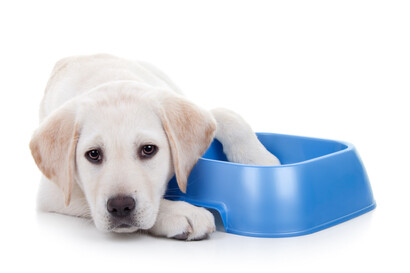
Sometimes, a loss of appetite in dogs can be attributed to something as simple as a dog not liking his food. According to Board Certified Veterinary Nutritionist, Dr. Dan Su, MS, DVM, DACVIM-Nutrition, dogs who are used to eating one food stage a hunger strike when they are switched to a new food that isn’t as tasty. This often happens when a dog needs prescription food to manage a health condition since many prescription diets aren’t all that tasty.
Aside from preference, there are many other physical and behavioral reasons that can cause a dog not to eat even when water intake is normal. Here are six common reasons why dogs may go on a hunger strike.
1. Dental disease
When a dog stops eating, dental problems are a common culprit. Dental conditions like broken teeth, abscesses, severe gingivitis, and oral tumors can be extremely painful. Dogs don’t always let on when they are hurting, but they might stop eating.
2. Medical issues
According to Su, dogs who experience recurring gastrointestinal issues or pancreatitis (inflammation of the pancreas) might have an on-and-off appetite when the condition flares up.
If your dog seems to be drinking an excessive amount of water, other conditions like Cushing’s or Addison’s disease could be the culprit. Drinking a lot of water is one thing, but inhaling it all at once several times a day could be something more serious. If emptying the water bowl is accompanied by an abnormal amount of peeing, take your dog to the veterinarian for testing.
“Any disease in the early stage that isn’t presenting with very obvious clinical signs can cause a decrease in appetite,” says Su. That’s why it’s so important to take your dog’s loss of appetite seriously. It could be the key to diagnosing an underlying cause early, which could lead to a better outcome.
3. Reinforced behaviors
It’s not uncommon for a dog to prefer one food to another. After all, you probably have a favorite meal or food, too. But that probably never stopped your parents from insisting that you eat your vegetables.
Try not to overreact and jump into problem-solving mode whenever your dog seems a little disinterested in dinner. What starts out as a minor preference can easily develop into a lifetime of chronic picky eating when a pet parent reinforces the behavior. If your dog refuses to eat and you respond with a tastier option, they’ll soon learn that a hunger strike is the best way to an upgraded meal ticket.
4. Side effects
If your dog is being treated for a medical condition or disease, certain medications or treatments (such as chemotherapy) may cause nausea or inappetence. Vaccinations can also cause a temporary lack of appetite.
5. Overfeeding
Many pet owners overestimate the amount of food a dog needs. Or they may have that amount exactly right, but neglect to account for extra treats throughout the day. So what seems like a suppressed appetite simply means your dog is full (and possibly needs to poop!)
Take a hard look at how much you are feeding your dog, compared with how much you should feed your dog, and ask your veterinarian to calculate how many daily calories your dog needs…then stick to it!
6. Aging
It is not uncommon for some dogs to experience a somewhat suppressed appetite as they age. “Their senses, such as the sense of smell and taste, can become duller, which can affect appetite,” says Su. “However, most senior dogs also become less active, and thus their energy requirement decreases. So most older dogs would need to eat less than they did when they were younger to avoid excessive weight gain.”
What Should You Do?
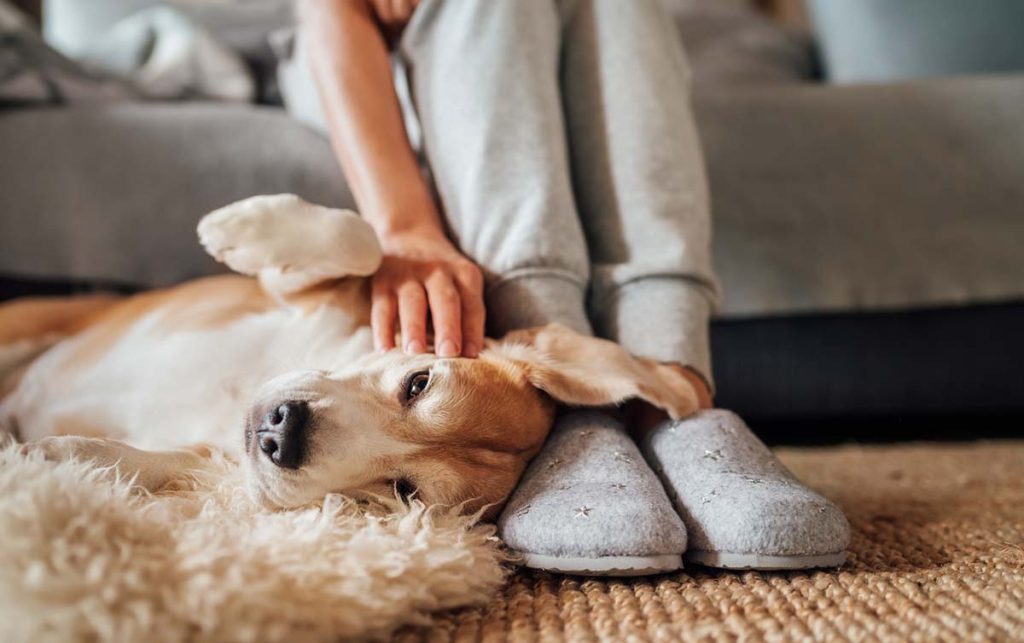
It’s easy to see there are several reasons why your dog might not be eating normally. The first thing to do is get him a check-up, and you can get him treated for any problems. Additionally, your vet can recommend the best way to get your dog to start eating again.
Your vet might recommend strategies like the following:
- Give your buddy his favorite dog food. If it is canned food, you can make it even more tempting by heating it up to release the food’s aroma. If it’s dry food, you can add some water or chicken broth to make it more appealing to your furry friend.
- If your dog is still eating treats, you can crumble his treats into his normal dog food to get him to start eating.
- If your dog has a health problem like pancreatitis, you’ll want to feed him bland food like boiled chicken or hamburger with white rice. Don’t mix any treats or other enticements in until your vet indicates it is safe to do so.
- You can try to feed a different type of food to see if your dog has simply changed his tastes.
Try Fresh Dog Food
At JustForDogs, we’re passionate about dog food. We strive to ensure whole food, human-grade meals that maximize nutrient absorption and are sure to entice your dog to start eating again. We also provide vet-prescribed meals for numerous conditions that might affect your pet’s health. Check us out today to change your dog’s life forever!
This content is for informational use only and does not replace professional nutrition and/or medical advice, diagnosis, or treatment. It is not a substitute for and should not be relied upon for specific nutrition and/or medical recommendations. Please talk with your veterinarian about any questions or concerns.
